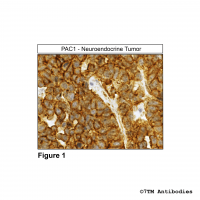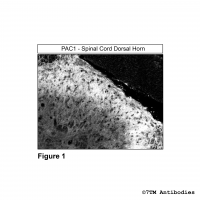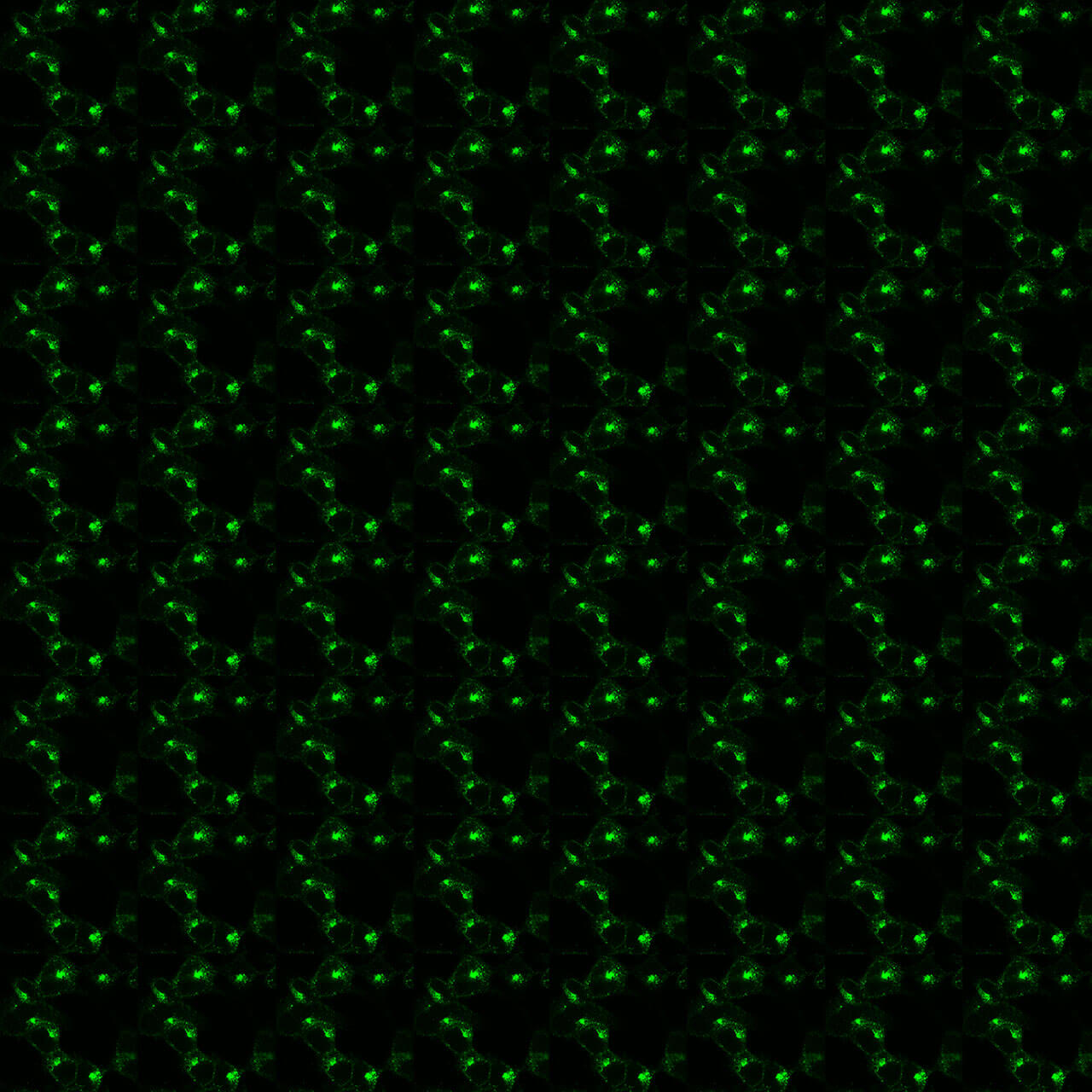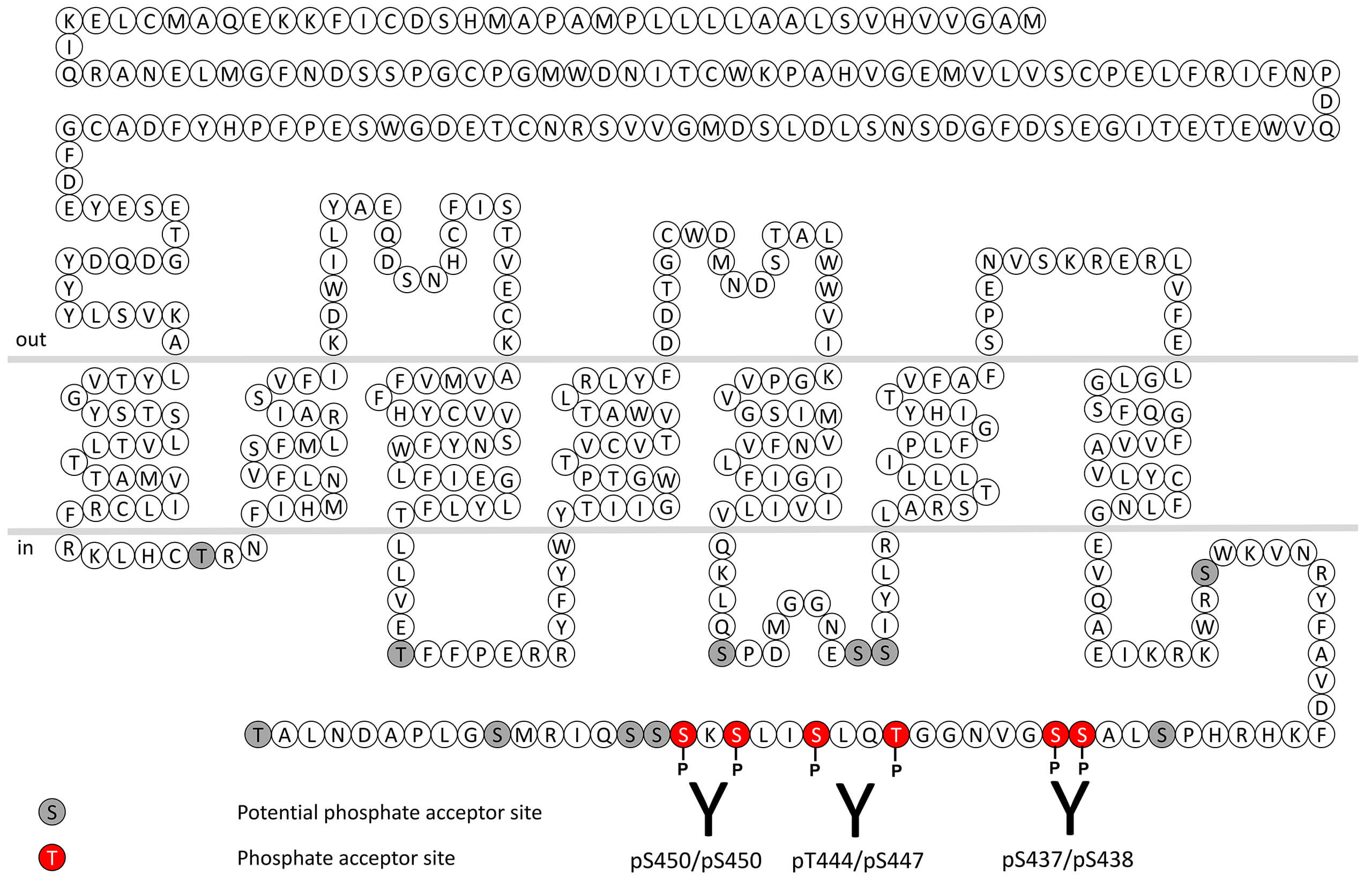No results were found for the filter!
NEW
 pS450/pS452-PAC1 (phospho-PACAP Receptor 1...
pS450/pS452-PAC1 (phospho-PACAP Receptor 1... Serine450/Serine452 (S450/S452) is major phosphorylation site of the PACAP Receptor 1 (PAC1). The pS450/pS452-PAC1 antibody detects phosphorylation in response to agonists. S450/S452 phosphorylation is likely to be involved in efficient...
$ 375.00 *
NEW
 pT444/pS447-PAC1 (phospho-PACAP Receptor 1...
pT444/pS447-PAC1 (phospho-PACAP Receptor 1... Threonine444/Serine447 (T444/S447) is major phosphorylation site of the PACAP Receptor 1 (PAC1). The pT444/pS447-PAC1 antibody detects phosphorylation in response to agonists. T444/S447 phosphorylation is likely to be involved in...
$ 375.00 *
NEW
 pS437/pS438-PAC1 (phospho-PACAP Receptor 1...
pS437/pS438-PAC1 (phospho-PACAP Receptor 1... Serine437/Serine438 (S437/S438) is major phosphorylation site of the PACAP Receptor 1 (PAC1). The pS437/pS438-PAC1 antibody detects phosphorylation in response to agonists. S437/S438 phosphorylation is likely to be involved in efficient...
$ 375.00 *
Citations
 PAC1 (IHC-grade), PACAP Receptor 1 Antibody
PAC1 (IHC-grade), PACAP Receptor 1 Antibody The PAC1 antibody is directed against the distal end of the carboxyl-terminal tail of human PACAP Receptor 1. It can be used to detect total PAC1 receptors in Western blots independent of phosphorylation. The PAC1 antibody can also be...
$ 375.00 *
Citations
 mPAC1 (IHC-grade), PACAP Receptor 1 Antibody...
mPAC1 (IHC-grade), PACAP Receptor 1 Antibody... The mouse PAC1 antibody is directed against the distal end of the carboxyl-terminal tail of mouse and rat PACAP receptor 1. It can be used to detect total PAC1 receptors in Western blots independent of phosphorylation. The mouse PAC1...
$ 375.00 *
Citations
 PAC1 (non-phospho), PACAP Receptor 1 Antibody
PAC1 (non-phospho), PACAP Receptor 1 Antibody The PAC1 antibody is directed against the distal end of the carboxyl-terminal tail of human PACAP Receptor 1. It can be used to detect total PAC1 receptors in Western blots independent of phosphorylation. The PAC1 antibody can also be...
$ 375.00 *
Recently viewed


